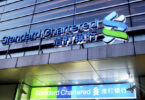The securities services arm of Standard Chartered has a three-pronged strategy for adopting blockchain. Its first product is a DLT-based transfer agency system that’s already live. The second offering, a solution for digital asset custody, is onboarding initial clients. It’s currently working on the third planned step of tokenizatio, including financing and collateral.
Speaking during the SIBOS banking event, Ying-Ying Tan, Global Head of product management for the division, said the new transfer agency system is 60% more efficient than the legacy one, meaning that it is already profitable.
When we first published this note, we overlooked that Standard Chartered didn’t build the transfer agency system from scratch, they partnered with Deutsche Börse owned FundsDLT.
Article continues …

Want the full story? Pro subscribers get complete articles, exclusive industry analysis, and early access to legislative updates that keep you ahead of the competition. Join the professionals who are choosing deeper insights over surface level news.






